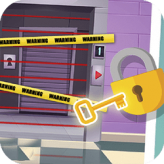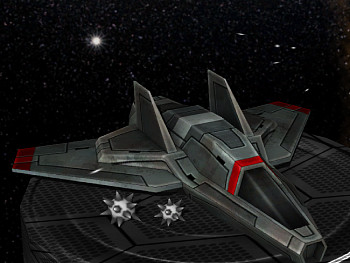From Plug-ins to Play Instantly: Discover the Evolution of Gaming with Sarada
Gaming isn’t what it used to be - it has come a long way!
From pixel screens with joysticks and loading pages, it has evolved into instantly accessible, immersive worlds where you can battle friends halfway across the planet or build your own digital universe.
And right now? We’re entering a new gaming era - one that platforms like Sarada are leading.
Let's rewind a little before fast-forwarding the epic evolution of gaming and the future it's heading to.
The Birth Era: When it All Began
It all began with glowing screens and joystick battles. The games were simple and offline. You go to the arcades, insert coins, and play, that simple but less fun.
Pong laid the foundation of the gaming industry, but the popularity was brought by Pac-Man, Space Invaders, and Donkey Kong, these weren’t just games; they were memories with ultimate fun, but the fun was limited, you play alone and not everyone can go to arcades whenever they want.
Then came a revolution: Home Consoles - The plug-and-play gaming
With the release of the Atari 2600 and later the Nintendo Entertainment System (NES), gaming moved from public spaces into living rooms. Kids don’t have to leave the house and can play anytime they want.
Super Mario Bros, The legend of Zelda, and Duck Hunt became the 80’s generation kid’s childhood paradise. The NES became a must-have device in every household and family, and gaming officially became mainstream.
The Rise of PC Gaming: 90’s
This was the decade where gaming matured, for example: Doom, Quake, Warcraft, and Age of Empires ruled the scene. The 90s witnessed a console war like no other, Nintendo vs Sega was one of the historic moments in the gaming community, and this rivalry was later joined by Sony’s PlayStation.
Gamers weren’t just playing, they were modding, creating, and even hosting LAN parties.
- The 1990s saw major innovation, the most notable is the transition from 2D to real-time 3D graphics. This was a revolutionary jump in game graphics and design.
- The Eletronic giant Sony’s PlayStation dominated the 90’s gaming console market and it became synonymous with “cool gamers” for teens.
- The Graphics leveled up. So did stories, the PC gaming scenes blossomed with RTS, FPS, and RPG genres exploding in popularity.
- The history of gaming consoles from Atari to PlayStation shows how Gaming, which was once a solo experience, began to shift. Multiplayer and competitive gaming were on the rise.
Then came the Boom: Internet changed Everything
The 2000s took gaming to uncharted territory
As the internet became mainstream, games started going online. And suddenly, you were no longer limited to friends on your couch. Your opponent could be sitting halfway across the globe. Games like Counter-Strike, World of Warcraft, and Halo became social hangouts. They made teamwork (and trash talk) and strategic planning the core of gaming. Online lobbies have become social hubs. Leaderboards became goals.
Sega’s Dreamcast was the first internet-ready console, though it was a massive failure it paved the way for the next generation of consoles like Xbox.
- Xbox Live and PlayStation Network introduced console gamers to multiplayer matchmaking, voice chat, and leaderboards.
- Massively Multiplayer Online Role-playing Games (MMORPGs) also began to appear. These games quicky gained traction as they allowed millions of gamers worldwide to play, engage, and compete against other fans on the same platform.
- Blizzard's World of Warcraft (2004) became a global sensation when it was released popularizing the MMORPG genre, reaching over 10 million subscribers at its peak.
Those were the days when consoles ruled the living rooms and even to this day consoles stay at the core of the gaming community.
Gaming became a world of competition, virtual connection, and pure fun.
Smartphone Transformation: Gaming for Everyone, Everywhere
The smartphone era hit the gaming industry like a power-up. Gaming wasn’t limited to consoles or PCs; it has gone through yet another rapid evolution that has widened gaming demographics. Thanks to smartphones gaming evolution, now you can play any game, anytime, anywhere.
But before smartphones became gaming platforms, there were dedicated handheld gaming devices. These were standalone devices that, unlike phones, were dedicated solely to gaming and had limited gaming functions. Snake was the most famous early mobile game that was introduced by Nokia. It's a simple but super addictive game played by almost everyone, well if you didn't play it then what rock are you living under.
Many mobile games were cheap or even free, relying on in-app advertising or later freemium (free-to-play with in-app purchases) methods to generate revenue. Games like Angry Birds, Clash of Clans, and PUBG Mobile showed us that you didn’t need a console, just a phone and some free time.
If the 2000s introduced online multiplayer to the masses, the 2010s ensured gaming never left your side and your pocket.
The decade of the 2010s was a turning point in the gaming industry, with e-sports (electronic sports) skyrocketing in popularity. The rise of e-sports launched as a global phenomenon in which professional gamers and teams competed in tournaments for huge prizes and international recognition. This competitive side of gaming attracted huge audiences.
And this is when streaming platforms such as Twitch and YouTube Gaming gained popularity. These platforms allowed gamers to share their gameplay with a global audience. Visitors could participate in real-time chat, which promoted a sense of community. Streamers rose to celebrity status, and these channels were crucial to marketing and promotion in the gaming world.
The Now of Gaming: Now & Beyond
Today's gaming landscape is more vibrant and adaptable than ever. Gamers have never been more privileged. Furthermore, Virtual Reality (VR) and Augmented Reality (AR) technologies started to alter the gaming industry. VR provided immersive experiences that transported players to fantasy realms, whilst AR combined the virtual and real worlds, enhancing gaming with real-world interactions.
Though both VR and AR are still developing and are seen as the gaming future, with hardware like VR headsets VR adoption has progressively increased. Gaming communities are now socializing on platforms like Discord and Reddit with vibrant conversations, gameplay discussions, fan theories, and event coordination deepening the sense of community beyond the game itself.
Gamers now can also move seamlessly between devices. Popular games like Fortnite, Call of Duty, Minecraft, and Genshin Impact have blurred the lines between console, PC, and mobile gaming, creating truly unified play experiences.
Even AI has begun to make an appearance, shaping in-game narratives, producing NPC conversation, and tailoring player experiences on the spot. Today's games are increasingly smart, well-networked, and shaped by the players themselves.
However, with all of this advancement comes more struggle. Prolonged download times, subscription fatigue, device compatibility issues, and much more can make even the most enjoyable games feel tedious.
This is why platforms like Sarada are so refreshing. By removing the clutter, there is Gaming without downloads or installations, only instant play on any device, all for free. Sarada captures the freedom of modern gaming while eliminating complications. It easily integrates into this developed ecosystem, providing a simpler, faster, and more accessible method to play in an always-online world.
As the Gaming Industry evolves, there’s one thing that remains constant: gaming has always been about pushing the boundaries of technology, creativity, and human interaction. From the simplicity of Pong to the complexities of open-world sagas and cloud-powered experiences, the trip has been nothing short of remarkable.
And, while the next chapter of gaming will undoubtedly bring new platforms, smarter AI, and even more immersive worlds, it will also require accessibility, speed, and convenience. That's where platforms like Sarada quietly shine, promising an instant, inclusive future of play that is ready for whatever comes next.


























